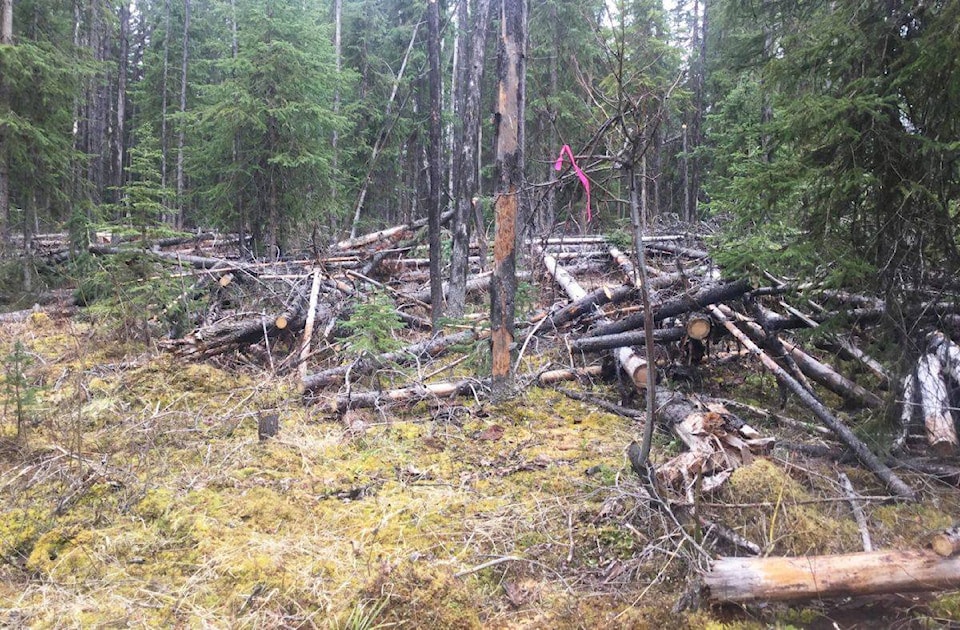The communities of Burns Lake, Decker Lake, and surrounding rural areas are at significant risk of wildfire, according to Burns Lake Community Forest manager Frank Varga.
“These communities are surrounded by dead pine stands in constrained areas,” he explained. “Make no mistake, it’s not an if statement… it’s a when… we have been lucky.”
READ MORE: Burns Lake resident warns council of wildfire threats
READ MORE: Threat of fire ‘imminent’ at Boer Mountain site
This topic was discussed during the 2018 British Columbia Community Forest Association conference, which was held in Burns Lake last May. The event brought together representatives from 30 community forests, First Nations, elected officials, the provincial government, forest professionals, researchers and students.
According to a presentation by forestry consultant company B.C. Blackwell and Associates Ltd., Burns Lake is among the top five communities at risk in B.C., based on the percentage of area of hazardous fuels.
Although wildfires are a natural part of the ecosystem, Varga says more needs to be done to mitigate wildfire effects around communities.
“The public needs to take fire threat seriously,” he said. “We are complacent until it’s at our doorstep, when we expect firefighters to do miracles.”
The province has experienced a series of catastrophic wildfire seasons over the past 10 years, including 2003, 2004, 2009, 2010, 2014, 2015 and 2017 with substantial suppression costs, economic and resource loss and large areas burned. Projections of future changes in climate suggest these trends are likely to continue, and future wildfire losses are likely to increase, according to B.C. Blackwell and Associates Ltd.
At a provincial scale, Varga says it’s vital to re-examine how forests and land base are managed.
“We need to recognize that drawing lines on a map and restricting forest management activities within those lines contradict our efforts for protection of property and human life in rural communities, and in a broader context undermine our efforts for true sustainable forest management,” he said, referring to visual quality objectives areas and old growth management areas which, in combination with other areas where forestry development is prevented or constrained, are used to achieve biodiversity targets.
“This [re-examination] requires transformative change in way of thinking,” he said, adding that as an area base tenure holder he could effectively support management strategies to mitigate fire risks in the Burns Lake area.
“I just need the legislative support to do so; until there is an appetite to make changes for the purposes of fire hazard mitigation, implementation will be limited.”
According to Varga, the only effective options for wildfire risk mitigation in certain forest patches around Burns Lake - which consist mostly of dead pine and blowdown - are clearcut harvest and fibre removal.
“We clearly need to bring back prescribe burning,” he continued, referring to the tool used by forest professionals to achieve objectives such as reducing combustible material, including underbrush and dead wood.
Varga added that efforts of community FireSmart programs need to continue so that the public can be informed and prepared in the event of a wildfire, and that Community Wildfire Protection Plans need to go beyond the standard two km range - ideally having a five to 10 km range.
“It is a proven fact that ash and burning debris can travel well beyond two km,” he said.
READ MORE: Burns Lake now FireSmart certified
READ MORE: Eleven wildfires a year in Burns Lake
In the past couple of weeks the Ministry of Forests, Lands, Natural Resource Operations and Rural Development, in partnership with the Regional District of Bulkley-Nechako, held a series of information sessions about wildfires in Burns Lake, François Lake, Grassy Plains and Rose Lake.
Topics covered during these open houses included a review of the 2017 wildfire season, how to reduce the potential impacts of a wildfire on homes and property, sources of funding for wildfire risk-reduction projects, as well as emergency management planning in the region.
@flavio_nienow
flavionienow@gmail.com
Like us on Facebook and follow us on Twitter.
